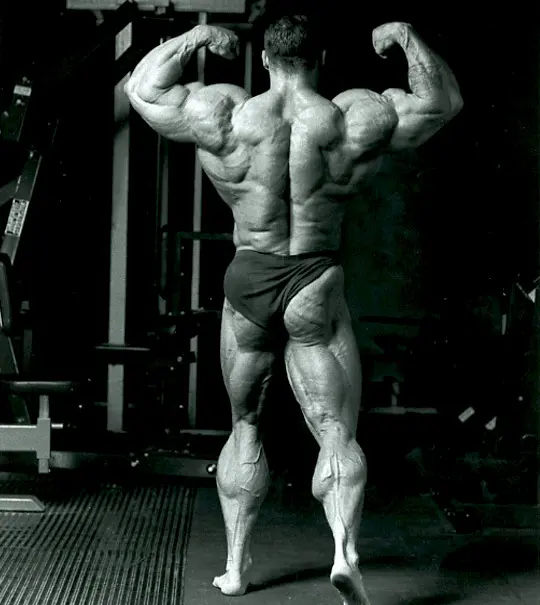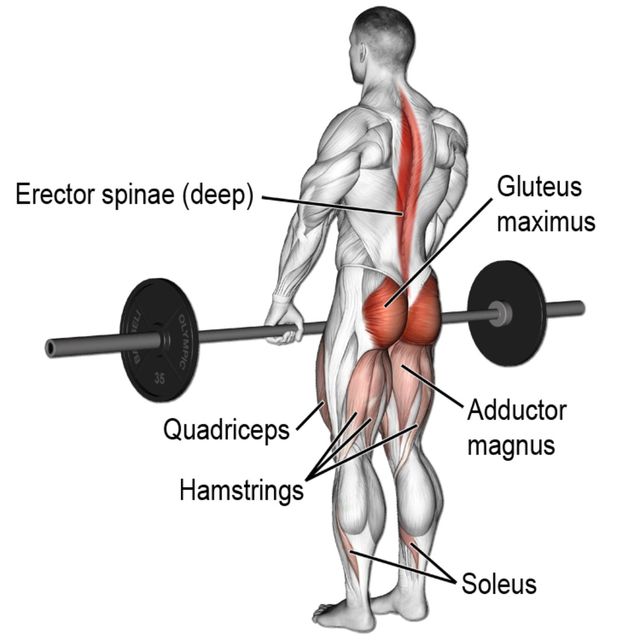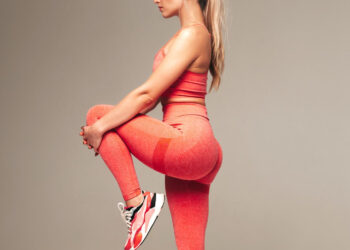I’ve been a personal trainer for more than three decades. During that time, I’ve helped many people overcome chronic back pain. This is hardly surprising, given that one in eight adults suffers from persistent back pain, and more than two-thirds of all men and women will experience some kind of back pain during their lifetimes (1).
One of the best ways to prevent back pain is to strengthen your lower back muscles. Despite this, many exercisers skip lower back training because they believe their lower back muscles get enough stimulation during their regular back workout. Others avoid it because, ironically, they don’t want to risk hurting their backs.
That’s like skipping arm workouts so you can have bigger biceps!
Don’t let your lower back become the weak link that undermines your training. Instead, make lower back training a priority. A stronger lower back will have a positive effect on many of the other exercises in your workouts. It could also prevent back injuries and lower back pain.
In this article, I reveal the exercises I use to help my clients build a bullet-proof lower back. I’ve also provided a sample workout designed to help you build a more muscular, resilient lower back.
Level Up Your Fitness: Join our 💪 strong community in Fitness Volt Newsletter. Get daily inspiration, expert-backed workouts, nutrition tips, the latest in strength sports, and the support you need to reach your goals. Subscribe for free! Recent Updates: On June 22, 2024, Fitness Volt’s Senior Editor Vidur Saini (American Council on Exercise-CPT) updated the article and added actionable expert tips throughout the piece to improve the reader experience.
10 Best Lower Back Exercises
There are many lower back exercises, but some are better than others. Here are 10 of the very best:
- Hyperextension
- Bird-Dogs
- Cat-Cow
- Superman
- Barbell Hip Thrusts
- Good Mornings
- Rack Pull
- Reverse Hyperextensions
- Romanian Deadlifts
- Kettlebell Swing
1. Hyperextension
| Sets & Reps | Equipment Needed | Target Muscles |
| 3 x 8-12 | Hyperextension bench or Glute Ham Developer | Erector spinae, hamstrings, glutes |
Hyperextensions, or 45-degree back extensions, are a spine-friendly lower back exercise. Besides working your erector spinae muscles, this popular exercise strengthens your glutes and hamstrings, making it an excellent move for your entire posterior chain.
You can do hyperextensions with just your body weight for resistance or holding weights to make it more challenging.
Most gyms have hyperextension benches, which are also available for home use. Another good option for home exercisers is to do this back exercise lying face-down across a stability ball instead of a bench.
“Hyperextensions are often overlooked, but they’re a powerhouse for posterior chain development,” says Saini. Use slow eccentrics to maximize the time under tension (TUT) and promote hypertrophy.
Pro Tip: Go as low during the descent as possible for optimal lower back muscle fiber recruitment.
| Difficulty | Progression | Regression |
| Beginner | Add weight with a plate or dumbbell held to chest | Bodyweight good mornings |
Learn how to do hyperextensions here.
2. Bird-Dogs
| Sets & Reps | Equipment Needed | Target Muscles |
| 3 x 10-15 | Bodyweight | Core, glutes, shoulders, erector spinae |
Bird dogs are often described as a glute and core exercise, which it is. However, it’s also a great way to train your lower back. Since the load on your spine is relatively low, this move is ideal for beginners. I often do bird dogs before moving on to more demanding exercises, such as Romanian deadlifts or good mornings.
As an added benefit, bird dogs teach you to adopt and maintain a neutral spine, i.e., a natural lower back arch. This means they’re good for improving your posture.
All in all, whether you are a beginner, intermediate, or advanced exerciser, bird dogs deserve a place in your workouts.
Saini adds that the bird dogs are more than just a core exercise. They demand stability from your shoulders and hips, making them an excellent movement for improving overall posture and spinal health.
Pro Tip: Focus on reaching your opposite hand and foot away from each other. This creates a longer lever, increasing core engagement and improving stability throughout the movement.
| Difficulty | Progression | Regression |
| Beginner | Dead bug | Planks |
Read more about bird-dogs here.
3. Cat-Cow
| Sets & Reps | Equipment Needed | Target Muscles |
| 3 x 10-15 | Bodyweight | Core, erector spinae |
While cat/cow won’t add much muscle or strength to your lower back, it’ll do wonders for the mobility and flexibility of your entire spine. Do this exercise as part of your warm-up or anytime your back feels stiff or tight. I often do this exercise to break up long periods of sitting. Eight to 10 reps make my spine feel like new!
To get the most from this exercise, move slowly and smoothly, gradually increasing your range of motion as your spine starts to feel more limber.
Saini advises not to rush through cat-cows. Instead, use it as a mindful movement to connect with your spine. Pay attention to each vertebra as you move, promoting mobility and reducing tension.
Pro Tip: Think about moving one vertebra at a time to enhance spinal mobility and improve neuromuscular control.
| Difficulty | Progression | Regression |
| Beginner | Bird dogs | Planks |
Learn how to do the cat/cow here.
4. Superman
| Sets & Reps | Equipment Needed | Target Muscles |
| 3 x 10-15 | Bodyweight | Erector spinae, glutes, hamstrings |
This is a bodyweight-only exercise, so it’s ideal for home workouts.
When doing the superman, don’t lift your legs or upper body too high off the ground. Doing so hyperextends (extends too far) your lumbar spine, which could result in injury. You may also find this exercise more comfortable if you place a folded gym mat or cushion under your hips.
Saini adds that the Superman exercise is deceptively challenging. Focus on lifting your arms and legs simultaneously, creating a long line from fingertips to toes. This maximizes muscle engagement and avoids putting excessive strain on your lower back.
Pro Tip: Visualize lifting your belly button away from the floor as you raise your arms and legs. This cue engages your transverse abdominis, a deep core muscle crucial for spinal stability.
| Difficulty | Progression | Regression |
| Beginner | Superman with alternating arm/leg raises | Planks |
Check out this guide to the superman exercise.
5. Barbell Hip Thrusts
| Sets & Reps | Equipment Needed | Target Muscles |
| 3 x 8-12 | Barbell, weights, bench | Erector spinae, glutes, hamstrings |
Barbell hip thrusts are usually viewed as a glute exercise. However, they work your entire posterior chain, including your lower back. The main advantage of hip thrusts over other lower back exercises is that they don’t put too much pressure on your lumbar spine, making them more lower back-friendly, even if you use heavy weights.
While this exercise usually involves a barbell, you can do it with a weight plate or dumbbell resting on your hips or just use your body weight for resistance. You can also do it without a bench and while lying on the floor, making it an ideal home workout exercise. This variation is called a glute bridge.
Saini suggests using a moderately lightweight for this exercise and deliberately contracting the erector spinae muscles throughout the range of motion (ROM) for optimal stimulation.
Pro Tip: Use three-second eccentrics to maximize lower back muscle fiber recruitment and ensure you’re getting the most out of the exercise.
| Difficulty | Progression | Regression |
| Intermediate | Pause at the top of each rep, single-leg | Bodyweight hip thrusts, glute bridges |
Read our hip thrusts guide to find out more about this great exercise.
6. Good Mornings
| Sets & Reps | Equipment Needed | Target Muscles |
| 3 x 8-12 | Barbell, weights | Erector spinae, hamstrings, glutes |
Good mornings are a slightly controversial exercise. That’s because, if done incorrectly, they could cause serious injury. This problem is not unique to good mornings; any exercise done with improper form could cause more harm than good. That said, the position of the load means you’ll have to work extra hard to maintain a neutral (slightly arched) spine.
If you do not round your lower back, good mornings are not riskier than any other lower back exercise.
Good mornings can be done using a barbell or a resistance band as preferred. You can also perform this exercise using a Smith machine.
“While performing this exercise, think about pushing your hips and knees backward for optimal posterior chain engagement,” cues Saini.
Pro Tip: Keep your knees slightly bent throughout the movement. This takes the pressure off your lower back and allows for greater hamstring involvement.
| Difficulty | Progression | Regression |
| Intermediate | Pause at the bottom | Bodyweight good mornings, Romanian deadlifts |
Check out this good morning exercise guide to learn how to do good mornings correctly and safely.
Level Up Your Fitness: Join our 💪 strong community in Fitness Volt Newsletter. Get daily inspiration, expert-backed workouts, nutrition tips, the latest in strength sports, and the support you need to reach your goals. Subscribe for free!
7. Rack Pull
| Sets & Reps | Equipment Needed | Target Muscles |
| 3 x 5-8 | Barbell, weights, rack | Traps, erector spinae, glutes, hamstrings, lats |
All types of deadlifts, including conventional, trap bar, Romanian, sumo, deficit, etc., work your lower back. However, the rack pull could be one of the best options if you want to lift heavy weights while keeping your risk of injury to a minimum.
With rack pulls, you start each rep with the bar resting on blocks or in a power rack set to about knee height. This elevated position means you don’t have to lean very far forward, making it easier to maintain a neutral or slightly arched lower back despite the weight you’re lifting.
Saini adds that the rack pull is a great way to overload your posterior chain muscles, particularly if you have difficulty locking out a conventional deadlift.
Pro Tip: Initiate the movement by driving your heels into the floor and squeezing your glutes. This engages your posterior chain before the bar leaves the rack, promoting a safer and more powerful lift.
| Difficulty | Progression | Regression |
| Intermediate | Full ROM deadlifts | Romanian deadlifts, block pulls |
Find out more about rack pulls here.
8. Reverse Hyperextensions
| Sets & Reps | Equipment Needed | Target Muscles |
| 3 x 10-15 | Reverse hyperextension machine or Glute Ham Developer | Erector spinae, glutes, hamstrings |
This exercise involves stabilizing your lower back as you lift your legs. Reverse hypers are a popular accessory exercise with powerlifters. They allow you to lift moderate to heavy weights with little stress on your lumbar spine. Like most lower back exercises, they also involve your glutes and hamstrings, making them an effective way to develop your entire posterior chain.
The most straightforward way to do reverse hyperextensions is with a dedicated machine. However, you can also do this exercise using a flat bench and a stability ball.
“For optimal lower back engagement on this exercise, you must lift your legs as high toward the ceiling as possible,” Saini says.
Pro Tip: Focus on pausing at the top of each rep. This ensures you’re getting a full range of motion and maximizing muscle activation
| Difficulty | Progression | Regression |
| Beginner | Add resistance bands or ankle weights | Glute-ham raises on a GHD machine |
9. Romanian Deadlifts
| Sets & Reps | Equipment Needed | Target Muscles |
| 3 x 8-12 | Barbell, weights | Hamstrings, glutes, erector spinae |
Romanian deadlifts are a lot like rack pulls. However, instead of starting each rep with the bar resting on knee-high pins or boxes, you start from standing and lean as far forward as your flexibility allows. Take care not to round your lower back during this exercise. That would turn a great back builder into a back destroyer!
Saini suggests keeping your chest tall and pulling your scapula back and down to load the lower back on the descent.
Pro Tip: Pause for a three-count in the bottom position to maximize lower back stimulation.
| Difficulty | Progression | Regression |
| Intermediate | Deficit RDLs | Good mornings, kettlebell swings |
Learn more about Romanian deadlifts here.
10. Kettlebell Swing
| Sets & Reps | Equipment Needed | Target Muscles |
| 3 x 15-20 | Kettlebell | Erector spinae, glutes, hamstrings, core, shoulders, back |
Provided you can maintain a neutral spine during the slow-tempo exercises outlined above, you can kick your lower back workouts up a level with kettlebell swings. Doing any lower back exercise at a slower pace means you’ll need to work harder to stabilize your lumbar spine, providing an intense workout for your erector spinae, glutes, and hamstrings.
While you can raise the weight overhead (the American swing), it’s often preferable to swing your kettlebell up to shoulder height (the Russian swing), as this allows you to use heavier weights without hyperextending your lower back.
Saini highlights that the eccentric, especially the bottom position, of kettlebell swings is the most important part of the lift for lower back development.
Pro Tip: Hike the kettlebell back between your legs like a football and pause at the bottom of your ROM.
| Difficulty | Progression | Regression |
| Intermediate | Hip thrusts | Single-arm swings, kettlebell deadlifts |
Learn how to do the kettlebell swing here.
Sample Lower Back Workout

If you want a strong lower back, you need to make it a training priority. A lot of lifters make the mistake of treating their lower back as an afterthought, maybe doing a few sets of hyperextensions after training their abs.
This workout works your entire posterior chain with an extra emphasis on your erector spinae. Do it a few days before or after your normal leg training day. It contains heavy weight/low rep back exercises for strength, moderate weight/medium rep exercises for hypertrophy, and light weight/high rep exercises for endurance.
But, before you start, warm up with a few minutes of light cardio followed by some dynamic flexibility and mobility exercises for your hamstrings, hips, knees, and lower back.
Finally, do 2-3 light sets of the first exercise to ensure you are 100% ready for what is to come.
| No. | Exercise | Sets | Reps | Recovery |
| 1 | Rack pull | 5 | 3-5 | 3 minutes |
| 2 | Barbell hip thrust | 3 | 6-8 | 2 minutes |
| 3 | Good morning | 3 | 10-12 | 90 seconds |
| 4 | Reverse hyperextension | 3 | 10-12 | 90 seconds |
| 5 | Superman | 3 | 12-15 | 60 seconds |
Related: Lower Back Pain: Common Causes and Prevention For Athletes
Lower Back Anatomy

While you don’t need to know the names of the muscles that make up and are associated with your lower back, a basic knowledge of these structures may be helpful and could prove interesting.
The main muscles of the lower back are:
Erector Spinae
Erector spinae is the collective name for the muscles that run from the bottom to the top of your spine: spinalis, longissimus, and iliocostalis. They’re responsible for extending your spine and also play a part in lateral flexion. When they contract isometrically or statically, the erector spinae holds your spine upright and prevents it from rounding.
To be considered a lower back exercise, the erector spinae muscles must be actively involved. However, these muscles seldom work in isolation. The other muscles that invariably work alongside the erector spinae are:
Gluteus Maximus
Known as the glutes for short, this is the largest muscle in the human. The glutes are a powerful hip extender and are also involved in the abduction and external rotation of your hip. Most lower back exercises involve at least some hip extension and glute activation.
Hamstrings
Located on the back of your thighs, the hamstrings work with your glutes to extend your hips and also flex your knees. The three hamstring muscles are the biceps femoris, semimembranosus, and semitendinosus.
Together, the erector spinae, gluteus maximus, and hamstrings are known as the posterior chain.
Core
This is the collective name for the muscles of your midsection, namely the rectus abdominis, obliques, and transverse abdominis. The core muscles contract inward to generate intra-abdominal pressure, which helps support and stabilize your lumbar spine.
It’s all but impossible to isolate your lower back muscles, but that’s probably a good thing. In most everyday tasks, gym exercises, and sporting endeavors, these muscles work with the rest of your body, so it makes sense to train them the same way.
FAQs
1. I have a lower back injury – will these exercises help me?
If your back is currently bothering you, I strongly suggest you seek medical advice before doing any of the exercises or the workout in this article. Depending on the nature of your injury, training could make things worse rather than better.
Once you have the go-ahead to return to training, start with some easy bodyweight exercises, e.g., bird-dogs and hyperextension, to see how your back responds. Only progress to weighted lower back exercises if you remain pain-free.
2. Does wearing a weightlifting belt help protect against lower back injuries?
A weightlifting belt may protect your lower back from injury, but it’s not a passive support for your spine. Rather, wearing a belt makes it easier to create intra-abdominal pressure by giving you something to brace your core against. Simply strapping on a belt won’t prevent you from hurting your back if you don’t combine it with bracing. As such, you must learn to work with a belt to get the support and protection you want.
Related: Does Wearing A Lifting Belt Enhance Strength?
3. Why is rounding your lower back so dangerous?
A rounded lower back is a weak lower back. When your back is rounded, the stress that should be supported by your muscles ends up on your intervertebral disks and ligaments instead. These structures are inelastic, non-contractile, and avascular, making them easy to injure and slow to heal.
Consequently, it’s generally best to keep your lower back slightly arched, i.e., neutral. This ensures your muscles support more of the load. You can still strain a back muscle, but they heal faster than ligaments and disks because they have a much better blood supply.
Bracing helps stabilize your spine and reduces the tendency to round your lower back. That’s why you’ll often see bracing in the exercise instructions published on Fitness Volt.
4. Can I make changes to the exercises in the workout?
Please feel free to change the exercises in the workout according to your needs and goals. For example, you could do bird dogs instead of the Superman or Romanian deadlifts instead of good mornings. However, avoid changing exercises just because you find them challenging. Providing you can do them safely, it’s those harder exercises that drive your gains.
5. How often should I train my lower back?
Most muscle groups respond best to twice-weekly training, e.g., Monday and Thursday. This provides the best balance between work and rest. Hit your lower back more often, and you risk overtraining.
That said, you must also remember that your lower back is often trained indirectly, e.g., during your leg workouts. As such, you may only need one lower back-specific workout per week. So, adjust lower back training frequency to match your needs and the demands of the rest of your workouts.
Wrapping Up
If you care about your performance, appearance, and health, it’s time to start treating your lower back as a training priority. After all, a strong lower back is a healthy lower back and much less prone to injury.
Try to sit less and stand more, improve your posture, avoid rounding your lower back when lifting heavy weights, and spend some extra time training this crucial body part.
With a bit of dedication, you should be able to turn what is a weak link for many people into a muscle group that’s powerful and virtually unbreakable. If nothing else, strengthening your lower back could help you avoid becoming yet another lower back pain statistic.
References:
1 – Waterman BR, Belmont PJ Jr, Schoenfeld AJ. Low back pain in the United States: incidence and risk factors for presentation in the emergency setting. Spine J. 2012 Jan;12(1):63-70. doi: 10.1016/j.spinee.2011.09.002. Epub 2011 Oct 5. PMID: 21978519.









You didn’t mention the Russian Kettlebell Swing. In my opinion, if done correctly, it is the best, safest, and most therapeutic of all the posterior chain exercises.
Fair point – we’ve added it.
Thanks for your input.